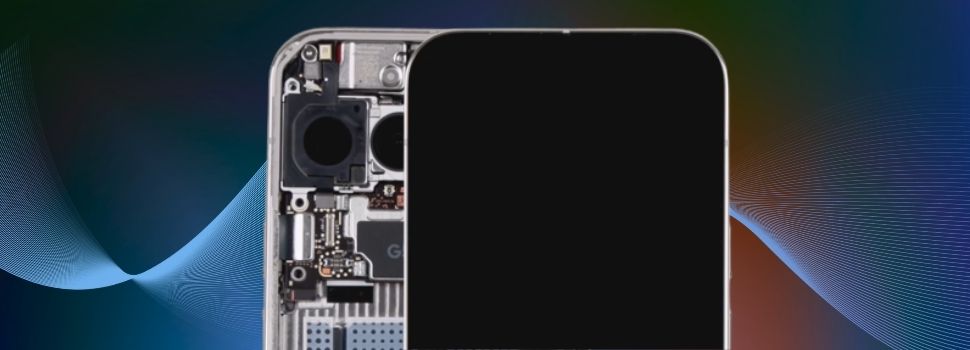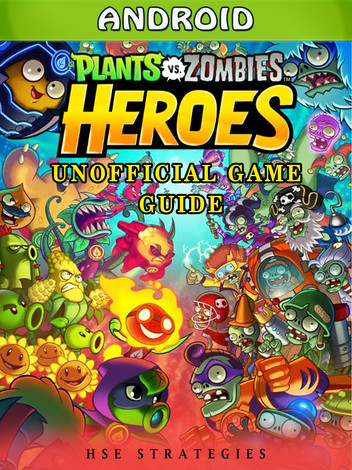
Beyond the Spec Sheet: A Deep Dive into Flagship Android Phone Reviews
The Modern Android Flagship: More Than a Sum of Its Parts
Welcome to the most exciting and often overwhelming time in the tech calendar: flagship phone season. Every few months, the giants of the industry—Samsung, Google, OnePlus, and others—unleash their latest marvels, each promising to be the pinnacle of mobile technology. The ensuing flood of Android News is a whirlwind of benchmark scores, camera shootouts, and charging speed tests. But in this relentless pursuit of bigger numbers and bolder claims, we often lose sight of a fundamental truth: a smartphone is not a spec sheet. It’s a daily companion, a creative tool, and a window to our digital world. A truly great flagship phone is defined not by its raw power, but by the seamlessness of its experience.
This article isn’t another technical breakdown. Instead, it’s a guide to navigating the complex world of flagship Android Phones. We’ll deconstruct the hype, look beyond the marketing, and explore what truly matters when living with these pocket-sized supercomputers day in and day out. We will analyze how the software, the ecosystem of Android Gadgets, and the long-term value proposition combine to create an experience that either delights or disappoints. Prepare to move beyond megapixels and gigahertz to understand the real story behind today’s top-tier devices.
Section 1: Deconstructing the Flagship Review Narrative
Every flagship review tends to follow a familiar script, focusing on a few key pillars of performance. While these are important, understanding the nuance behind the numbers is crucial. The marketing materials tell one story; real-world usage often tells another.
Beyond Megapixels: The Truth About Smartphone Photography
The camera is often the headline feature, with manufacturers engaging in a megapixel arms race. However, a 200MP sensor doesn’t automatically guarantee a better photo than a 50MP one. The real magic happens in the software and processing. This is where the philosophies of the major players diverge dramatically.
Case Study: Google Pixel vs. Samsung Galaxy: The Google Pixel 8 Pro, for example, relies heavily on computational photography. Its hardware is excellent, but its true strength lies in the AI-powered Tensor G3 chip, which processes images to produce photos that are often lauded for their natural look, accurate skin tones, and incredible dynamic range. Features like Magic Editor and Best Take aren’t hardware tricks; they are sophisticated software solutions. Conversely, Samsung’s Galaxy S24 Ultra often produces more vibrant, saturated images that pop right out of the camera. Some users love this punchy look, while others find it artificial. Neither approach is “wrong,” but they cater to different aesthetic preferences. The lesson here is to look at sample galleries from multiple reviewers, not just the spec sheet, to see which style aligns with your own.
Performance That Matters: The Daily Drive vs. The Benchmark Sprint
The latest Snapdragon or Tensor chip will undoubtedly post impressive benchmark scores, but does that translate to a tangibly better experience for the average user? For most daily tasks—scrolling social media, browsing the web, sending emails—the performance difference between the top two generations of flagship processors is practically imperceptible. Where it truly matters is in sustained performance and specialized tasks.
For mobile gamers, a phone with a superior cooling system, like the Asus ROG Phone, might be a better choice than a mainstream flagship, even with the same processor, because it prevents thermal throttling during long sessions. For users invested in AI, the Google Pixel’s Tensor chip is designed specifically to accelerate on-device machine learning tasks, making features like the Recorder app’s live transcription incredibly fast and accurate. The takeaway is to match the processor’s strengths to your specific use case, not just chase the highest Geekbench score.
The All-Day Battery Myth and the Reality of Charging

Nearly every manufacturer claims “all-day battery life,” but this is one of the most subjective metrics in the industry. “All-day” for a light user who occasionally checks email is vastly different from a power user who games, navigates with GPS, and constantly uses their camera. A more useful metric to consider is Screen-On Time (SOT), which reviewers often provide. A phone that consistently delivers 6-8 hours of SOT is a true battery champion. Furthermore, consider the charging ecosystem. A OnePlus phone with its proprietary 100W SUPERVOOC charging can go from 0 to 100% in under 30 minutes, a game-changer for users who need a quick top-up. However, this requires their specific charger. A Samsung or Pixel phone might charge slower but adheres to the universal USB-PD standard, offering more flexibility with third-party chargers and power banks.
Section 2: The Ecosystem Experience: A Phone Is Not an Island
In 2024, a flagship phone is the central hub of a personal technology ecosystem. Its value is magnified by how well it communicates with the other Android Gadgets in your life. This software and connectivity experience is arguably more important than any single hardware specification.
The Software Skin in the Game: One UI vs. The Pixel Experience
All flagship Android Phones run on the same core OS, but the user experience can be worlds apart. This is due to the “skin,” or custom user interface, that manufacturers build on top of stock Android.
- Google’s Pixel Experience: This is Android as Google intended it. It’s clean, minimalist, and smart. It’s known for its intelligent features like Call Screen, Now Playing, and a powerful At a Glance widget. The appeal is its simplicity and lack of bloatware.
- Samsung’s One UI: This is the polar opposite. It’s a feature-packed, highly customizable interface. For users who love to tinker, set up routines with Modes and Routines, or use advanced multitasking features like DeX, One UI is a power user’s dream. However, it can feel overwhelming to some and includes duplicate apps and third-party services.
Choosing between them is a matter of personal philosophy: do you prefer a simple, guided experience or a powerful toolkit with a steeper learning curve?
The AI Revolution in Your Pocket: Gimmick or Game-Changer?
Artificial Intelligence is the latest battleground for flagship supremacy. Samsung’s “Galaxy AI” and Google’s “Gemini” integration are heavily marketed, but their real-world utility varies. Features like Circle to Search are genuinely useful and change the way you interact with information on your screen. Live Translate, which can translate phone calls in real-time, is a technological marvel, though its practical application may be limited for the average user. The key is to evaluate these features based on your own life. Will you actually use generative AI to edit your photos, or do you just need a great point-and-shoot camera? The best AI features are those that solve a real problem and fade into the background, rather than those that require you to go out of your way to use them.
Connecting the Dots: Watches, Buds, and Seamless Integration
The “stickiness” of an ecosystem is real. A Samsung Galaxy Watch integrates most seamlessly with a Samsung phone, offering exclusive health monitoring features. Google’s Pixel Buds Pro offers features on a Pixel phone that aren’t available elsewhere. When choosing a phone, consider the other devices you own or plan to buy. The convenience of features like seamless audio switching, where your earbuds automatically switch from your tablet to your phone when a call comes in, is a powerful quality-of-life improvement that reviews often touch on but can’t fully quantify.
Section 3: The Price of Prestige: Value Beyond the Price Tag
A top-tier flagship can cost well over $1,200. It’s essential to critically assess whether that investment is justified for your needs, especially when “flagship killer” alternatives offer 90% of the experience for 60% of the price.
The Law of Diminishing Returns
The gap between a premium flagship and an upper mid-range phone has never been smaller. A device like the OnePlus 12 offers a top-tier Snapdragon processor, a brilliant display, and incredibly fast charging for hundreds of dollars less than a Samsung Galaxy S24 Ultra. What are you giving up? Typically, it’s the “last 10%”—things like a periscope zoom lens, official IP68 water resistance, or the most advanced AI features. For many users, these are acceptable compromises. Before pulling the trigger on the most expensive model, ask yourself if you will genuinely use those premium, exclusive features. Often, the smarter financial decision is the model one step down.

The Long-Term Value Proposition: The 7-Year Update Promise
One of the most significant recent developments in the Android News cycle has been the commitment from Google and Samsung to provide 7 years of OS and security updates for their flagship devices. This is a monumental shift. It means a phone purchased today will still be secure and running modern software in 2031. This dramatically increases the long-term value of these devices. It makes buying a flagship less of a 2-year expense and more of a long-term investment. It also boosts resale value. When choosing a phone, a brand’s update policy should be a primary consideration, as it directly impacts the device’s lifespan and security.
Case Study: The Photographer vs. The Power User
To illustrate how “the best” phone is subjective, consider two user profiles:
- The Photographer (Ava): Ava’s primary concern is capturing the best possible photos of her family and travels. She values a natural, true-to-life look and enjoys creative editing tools. For her, the Google Pixel 8 Pro is the ideal choice. Its computational photography excels at capturing difficult scenes, and AI tools like Magic Editor give her creative freedom. The raw performance is more than enough for her needs, and the clean software is a bonus.
- The Power User (Ben): Ben uses his phone for work. He’s constantly juggling emails, managing spreadsheets on the go, and using his phone as a mobile desktop with Samsung DeX. He needs robust multitasking and customization. For him, the Samsung Galaxy S24 Ultra is unmatched. Its powerful One UI software, S Pen for note-taking, and seamless integration with his Windows laptop make it the ultimate productivity tool.
Both are excellent flagship Android Phones, but their strengths cater to entirely different priorities.
Section 4: Recommendations and Best Practices for Choosing Your Next Flagship
Navigating the market can be tough. Here are some actionable tips to help you make an informed decision.

Identify Your “Must-Have” Feature
Be honest with yourself about what you value most. Is it the absolute best camera for still photos? The longest possible battery life? The fastest charging? A stylus for productivity? Clean, simple software? Rank your priorities and focus your research on the phones that excel in your number one area. Don’t get distracted by features you’ll never use.
Ergonomics Matter: Go Hands-On
A review can’t tell you how a phone feels in your hand. A phone with sharp, flat edges might look sleek, but it could be uncomfortable to hold for long periods. A large phone might offer an immersive screen but be impossible to use one-handed. Before you buy, go to a store and hold the devices you’re considering. Feel their weight, their balance, and their texture. This tactile experience is a critical part of ownership that is often overlooked.
Look Beyond the Launch Day Hype
Initial reviews are great for a first impression, but they can’t predict long-term performance or uncover software bugs that only appear after weeks of use. Once you’ve narrowed down your choices, search for “6 months later” or “long-term” reviews. These often provide more realistic insights into battery degradation, software stability, and day-to-day annoyances that don’t show up in a week-long review period.
Conclusion: Your Story, Your Smartphone
The landscape of flagship Android Phones is more competitive and exciting than ever. While it’s easy to get lost in the sea of specifications and marketing buzzwords, the best approach is to reframe the question. Instead of asking “Which phone is the best?”, ask “Which phone is the best for me?”. By understanding the philosophies behind the hardware, the nuances of the software experience, and the long-term value of ecosystem and updates, you can make a choice that goes beyond the spec sheet. The ultimate flagship isn’t the one with the highest numbers; it’s the one that seamlessly integrates into your life, empowers your work and creativity, and remains a reliable companion for years to come. Choose the device that best fits your personal story.



